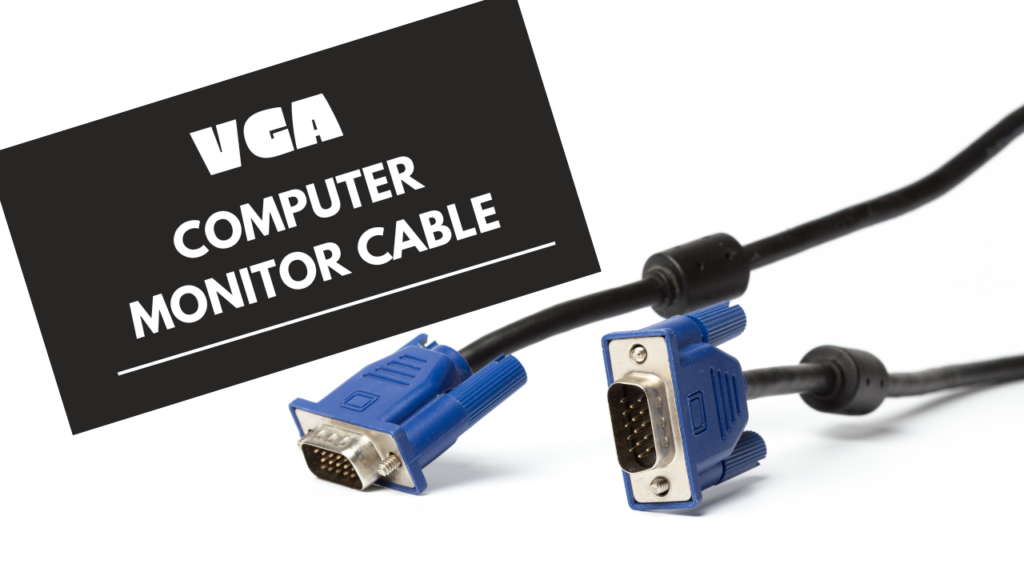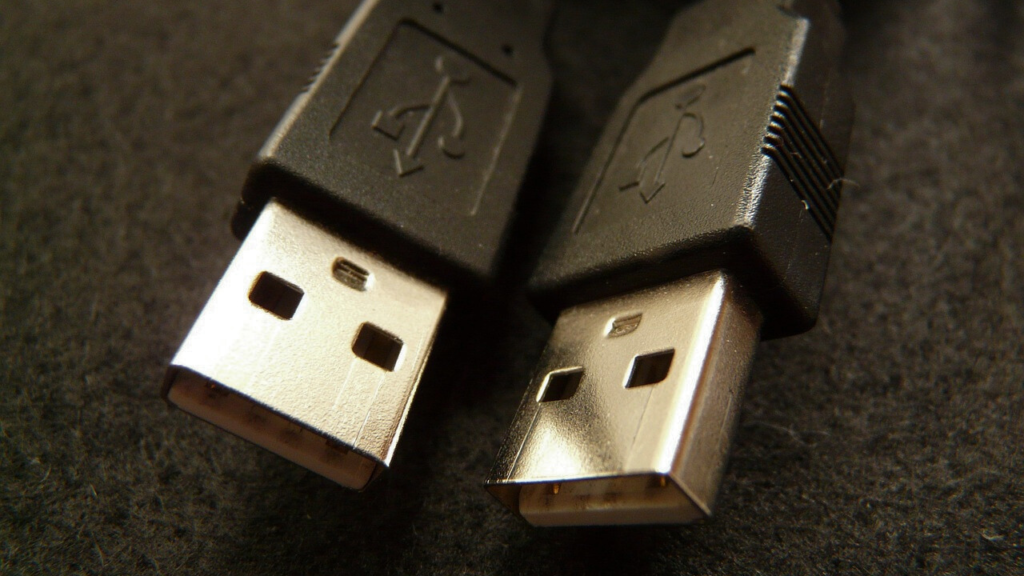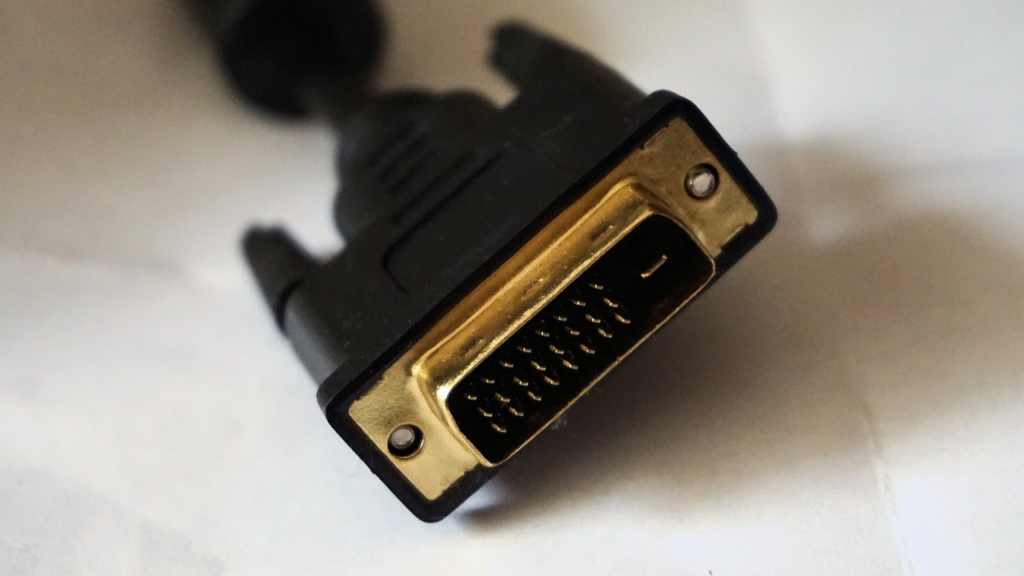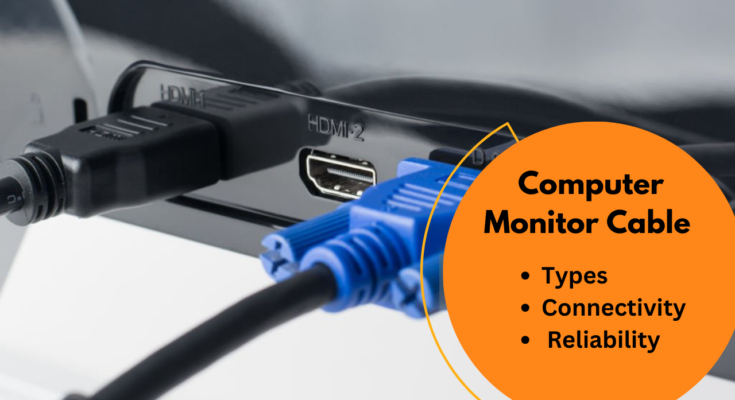A Complete Guide to Computer Monitor Cable Types : Examine the Connectivity, Reliability
Computer Monitor Cable:
In the current world, cables are a rather ubiquitous sight. You connect several devices with it, use it to recharge your laptop, tablet, or smartphone, and perform other tasks.
In terms of technology, a cable is a thick wire or several wires bonded together within an insulating layer, such as plastic or rubber. Cables are used to transmit electrical messages or convey power. It also goes by the names plugs, cables, and connectors—which is a rather common moniker. The unique cable used to link the components of the CPU is called a Computer Monitor Cable. If you wish to link your laptop to other devices or set up a PC. This page provides a thorough how-to for monitor wires.
In a world teeming with technological marvels, the computer monitor cable often takes a backseat in conversations about cutting-edge gadgets. However, its importance cannot be overstated, as it serves as the bridge that transmits the visual wonders from your computer to the monitor.
Importance of Choosing the Right Cable
Types of Computer Monitor Cables
Understanding the different types of Computer Monitor Cable is crucial for making an informed decision based on your specific needs and device compatibility.
1. DisplayPort Cables
- Overview of DisplayPort Technology: Because of its high bandwidth, DisplayPort connections are preferred by multimedia experts and gamers alike.High Bandwidth and Multiple Monitors: Supporting high refresh rates and resolutions is one of DisplayPort’s main features, which makes it ideal for gamers and multi-monitor setups.
DisplayPort Versions: Keep up with the newest compatible features and technical breakthroughs by staying informed about DisplayPort versions.
2. VGA Cables
VGA is an abbreviation for Video Graphics Array. It’s a Computer Monitor Cable that’s used to transfer video signals between devices. Video waves are sent over the VGA cable, which connects the monitor to your PC’s screen. IBM was the first to invent and patent this AV cable in 1987.

- Video Graphics Array: VGA cables are still in use even though they are considered legacy connections, particularly when used with older projectors and monitors.
- Analog Signal Transmission: Because VGA transmits analog signals, its resolution range may be more constrained than that of digital equivalents.
- Limited Resolution Support: Due to its analog architecture, VGA may not be able to produce images as clear as their digital equivalents on high-resolution screens.
Advantages
Video signals are sent in a single direction with the aid of the VGA connection. The VGA connection allows you to play videos on your PC.
3. HDMI Cables
- High Definition Multimedia Interface: High-definition audio and video transmission are now often associated with HDMI connections. Because of its adaptability, HDMI is the standard for a variety of devices, including streaming and game consoles.
- Audio and Video Transmission: One of HDMI’s most notable characteristics is its capacity to send both video and audio information over a single connection, which makes installations easier and cuts down on clutter from cables.
- Versions of HDMI and Features: Stay up to date with the latest versions of HDMI, since they introduce better features including support for larger resolutions, quicker refresh rates, and superior audio formats.
Nowadays, users can between three distinct varieties of HDMI, each with a different configuration of 19 pins.
For televisions, monitors, and 4K displays, kind A is the most widely used and biggest kind. Commonly used for portable electronics, Type C is a somewhat smaller (also called a “mini”) battery type. Also referred to as a “micro HDMI,” Type D is the smallest of the three. Currently, consumer items do not employ Types B or E.
4. USB-C Cables
Universal Serial Bus cables or USB cables are now extremely common. These are used for connecting units of a PC, for charging devices and so on. Moreover, USB cables are also used to connect peripheral devices like printers, mouses, cameras etc.

You can find different types of USB cables in the market which are used for different purposes.
Types of USB Cable Connector
a. USB 2.0 Type A
USB A cables are one-way cables and are used widely. One way of this cable is a smaller pin, with another one having a larger pin. Since it is a one-way cable, it will only go into the port one way. The side with the USB symbol or USB word written is you need to connect to your PC. It usually works on the host controller of the device.
The USB A cable is found in many types. The USB 2.0 port is often used in mouse, phone chargers etc.
On the other hand, the USB 3.0 Type-A comes with an additional pin. Hence, it is wider with two small pins protruding on both sides of a regular 2.0 port. It is commonly used for transferring data with a bandwidth of 5 GHz.
Provides a downstream connection. It prevents incorrect connections. It is a larger-sized cable and is not suitable for mobile and smaller devices.
b. USB Type B
The USB Type B cable is usually found in peripheral devices like printers, porting devices, scanners, which are larger. It offers a secure connection between the device and the PC. But, the USB B type is the older type of cable, which is not used widely at present.
c. USB type C
At present, type C cable is widely used for charging devices and as a connector for mobiles with a PC. It is a smaller rectangular port that can be used in upstream sockets and host controller ports of a device.
The Type C cable can transmit the data at a speed of 10 GBPS. It is also able to transmit both audio and video signals.
You will find Type C Ports with USB 2,0 port, 3.0 port, 3.1 gen port and Gen 2 ports.
d. USB Mini B
It is also another port that is used for peripheral devices. It is a smaller plug with dive pins and an extra ID pin for supporting the OTG devices. It hence allows the mobile devices to work as a hot and provides an electrical connection to the smartphones. Type Mini B cables are quite common in older Smartphone models.
e. USB Micro B
USB Micro B is another connector slimmer than Mini B but offers faster data and electricity transmission speed. It also comes with 5 pins and is compatible with smartphones, DSLRs and many other peripheral devices.
5. DVI Cables
- Digital Visual Interface: DVI connections offer a balance between analog and digital signals and are compatible with a variety of devices.
- Digital and Analog Signals: Because DVI can handle both digital and analog signals, it can be used with a wide range of monitor and graphics card configurations.

Types of DVI Monitor Cable Connectors
Here are common DVI Computer Monitor Cable and port types-
- DVI-D Single Link: It is an AVI connection which only provides digital-only displays of resolution up to 1920p and 1080p. It’s one end comes with ten pins, with a total of six rows of three diagonal pins and an additional pin.
- DVI-D Dual Link: DVI-D Dual Link cable comes with two data link functions and offers video transmission of resolutions like 2048p. Its point has a total of 25 pins, with a single pin and three rows of eight diagonally placed pins together for high rate video transmission.
- DVI- I Single Link: The DVI-I single link cable can transmit both digital and analog signals simultaneously. It is often used in analog display, digital-to-digital signal, or analog-to-analog signal. It has a total of 23 pins.
- DVI-Dual Link: DVI-Dual link cables also come with an extra data link for missing signals for high-resolution videos. It combines both digital and analogue signals through a single cable. It has 29 pins.
- Mini DVI: The Mini DVI cable supports both digital and analogue signals. It is a compact and smaller sized cable, which makes it good for laptops. Mini DVI is usually found in Apple devices.
Factors to Consider When Choosing a Monitor Cable
When choosing between different Computer Monitor Cable types, it’s critical to comprehend the major influencing factors because a thorough grasp of these aspects is critical for your unique requirements and preferences.
Resolution and Refresh Rate
The resolution and refresh rate capabilities of your graphics card and display should be taken into account when selecting a Computer Monitor Cable. This guarantees excellent graphics without sacrificing quality. A perfect viewing experience is guaranteed when cable specs and hardware capabilities coincide, eliminating any possibility of problems from mismatched resolution or refresh rate.
Cable Length
In order to achieve peak performance and avoid signal deterioration, the cable length is essential. By preserving the integrity of sent signals, it makes sure that connections between devices are dependable and smooth. By choosing the proper Computer Monitor Cable length, you may avoid possible problems caused by signal loss and guarantee a reliable, high-quality connection for your system.
Compatibility with Devices
To prevent connectivity problems and signal loss, use a Computer Monitor Cable that is compatible with your computer and display. Create harmony between the devices and the cable to provide uninterrupted data transfer, avoid visual interruptions, and preserve signal integrity all the way through the connection.
Cable Build Quality
To save wear and strain, increase lifespan, and lessen damage or deterioration over time, invest in Computer Monitor Cable with a sturdy structure. They are a wise choice to employ since they provide dependable performance, reduce the need for frequent replacements, and enhance a solid and effective networking experience.
Conclusion:
For connecting devices and recharging laptops, tablets, and cellphones, computer monitor cable are necessary. To transfer electricity or provide electrical signals, these substantial cables are connected together. For the best possible visual experience and maximum display capabilities, selecting the appropriate cable is essential. There are several varieties of computer monitor cable, such as USB-C, USB-D, VGA, DVI, HDMI, and DisplayPort. DisplayPort cables are recommended for multimedia and gaming, whereas HDMI cables provide high-definition audio and video transmission. While DVI computer monitor cables balance analog and digital signals, VGA connections transport video signals. PC units, peripheral devices, and charging devices are all connected via USB computer monitor cable.

